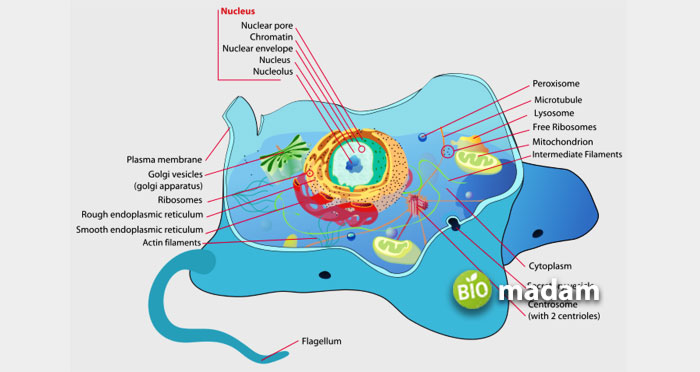Life must have been an easy-peasy phenomenon if organisms were single-celled. For example, if we were any unicellular organism, such as bacteria, we’d have performed our basic tasks within a single cell. Everything must be rotating in a closed cell, like obtaining food, growing into an organism, excreting wastes, breathing, or reproducing, just like prokaryotes. But life is much more than that! For us, being multicellular organisms, it’s more of a complex and specialized system.
The primary need for the complexities in a multicellular organism is to fulfill the basic body requirements that ultimately keep a person alive! Different levels of organizations eventually ladder up to form a human body. Biologists call these cells, tissues, organelles, organs, and organ systems.
An Introduction to a Typical Multicellular Organism
Almost all of the cells in a multicellular entity need specialized treatment to exchange waste and nutrients. Nature has made us living organisms different from microorganisms that simply exchange their material with the environment and are observed under the microscope. We, as humans, have a particular internal environment where an excess of extracellular fluid is present. All cells obtain their desired nutrients and oxygen from the fluid and, in return, release waste. We follow the mechanism of homeostasis, where the internal and external environments are kept steady and stable.
All these systems are directly or indirectly dependent on each other, creating a complex organism. Whether it’s a circulatory system, respiratory system, or digestive system, all are interlinked through primary units called tissues and organs that we will discuss today.
A Body Organization
A living body can be either unicellular or multicellular. There are no specialized structures or different levels of organization in a unicellular organism. However, like human beings, a multicellular species consists of trillions of cells that other complex into tissues and organs. A cell is the simplest and fundamental unit of life that arranges itself to form tissues that further make up an entire organ. These organs together are specialized for specific tasks within the human body.
Cells

Where cells are the basic unit of life for a multicellular organism, it is also an entire living material for unicellular species. Let’s again take an example of bacteria; these are nothing but single-celled organisms living a simpler life. In contrast, human beings are the essential species on a planet, performing their everyday tasks with significant struggle. It is why nature has set almost 200 different types of cells in a body, extending to approximately 30 trillion in quantity.
Relationship of Cells with Tissues

When a particular group of cells with similar structures are grouped, they produce a specific tissue defined for an individual function. A body comprises different tissues spread to lift its essential functions. The primary types of tissue in the human body are:
- Epithelial Tissues
- Connective Tissues
- Muscle Tissues
- Nervous Tissues
1. Epithelial Tissues
These are individual groups of cells that outline the exterior surfaces and cell membranes. Epithelial tissues are further classified into several types, specialized in lining different organs and body cavities.
2. Connective Tissues
Unlike epithelial tissues, connective tissues are held accountable for holding the body together with bones through tendons and ligaments.
3. Muscle Tissues
Muscle tissues can be smooth, cardiac, and skeletal. It means muscle tissues are responsible for handling the body’s voluntary as well as involuntary movements. When muscle tissue contracts, it promotes body movement.
4. Nervous Tissues
Similarly, nervous tissues are specified to conduct nerve impulses and generate signals within a body. With the help of nervous tissues, a body can understand brain functioning and produce reflex actions.
All these basic concepts were essential to understanding the relationship of tissues with organs that further have to constitute an entire organism.
Relationship of Tissues with Organs

An organ is a fully developed system set to perform particular tasks. All the organs in a human body are composed of two or more tissues, for example, the heart. It is one of the essential organs that consists of four different tissues to continue its activities. Similarly, there are 78 various organs specified for different tasks, and all are essential to living. Among all, the skin is the largest organ entirely composed of epithelial tissues.
Another good example to understand is the small and large intestine and their layered walls. They are among those organs that consist of all four primary tissues. The internal wall is lined with epithelial cells at the outer surface, where different enzymes and hormones are secreted. After that comes the smooth and connective tissues, where the latter promote the binding of layers with each other. Similarly, smooth tissues are responsible for involuntary movements, pushing the food throughout the gut.
The Final Make-up – An Organism
The working of different organs in a series to constitute an entire organism is a natural phenomenon that cannot be ignored. You can simply refer to this organization system as a group of workers employed at different tasks in a single unit. Just like that, a human body is asymmetrically arranged with different organs – some take the right side of the body while some are positioned on the left side.
You can further understand the relationship of tissues with organs in a body through numerous other examples. Of course, this is not the end of the levels of an organization, but truly a crucial part. However, organs then combine to form an organ system that eventually grows up as an organism to survive in an ecosystem!

Anna has completed her degree in Pharmacy from the University of Hawaii. She is serving as a research assistant in a pharmaceutical company. She had a great interest in writing blogs, traveling to different parts of the US, and trying delicious recipes in her spare time.

